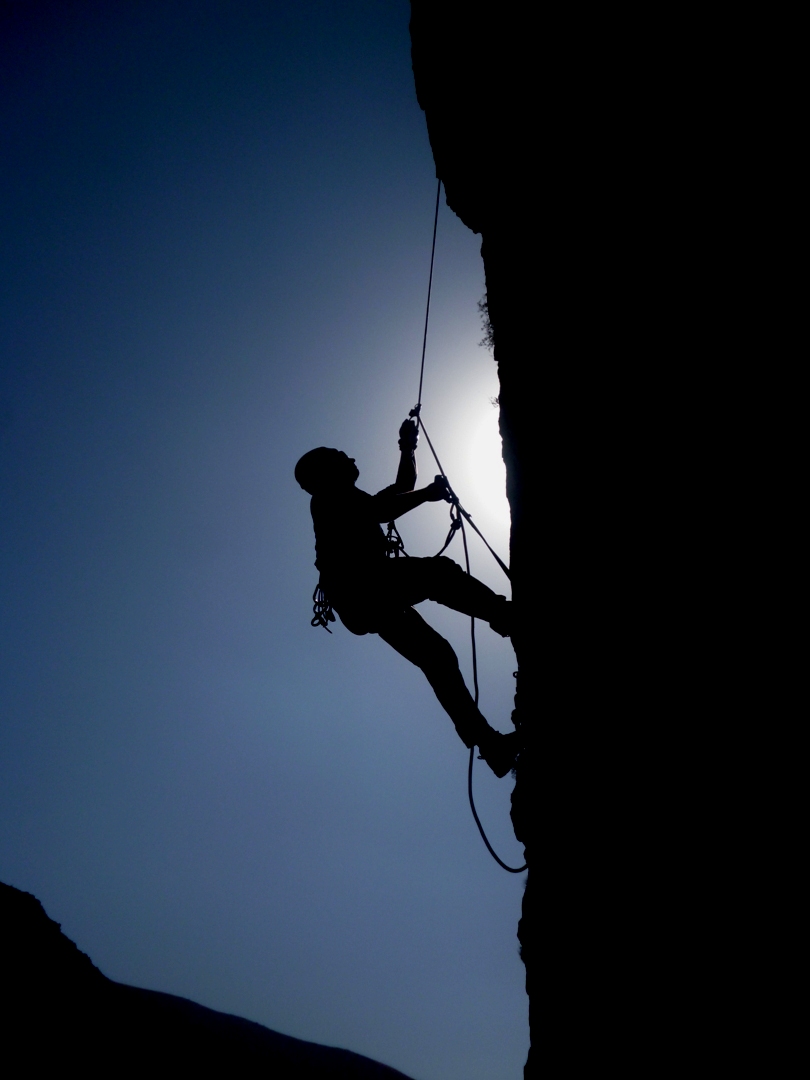For physical fitness, fun and, yes, adrenaline, nothing beats rock climbing. Despite its daredevil reputation, rock climbing can be enjoyed safely by any reasonably fit person with proper instruction and equipment.
In this article, REI Outdoor School instructors offer tips and video instruction to serve as a basic primer. But keep in mind that professional instruction is essential for any beginner—especially if you are heading outdoors. It takes more than reading an article and viewing videos to make you a climber!
Types of Rock Climbing
The rock-climbing world consists of a number of small niches. Consider which aspect of the sport interests you the most.
Indoor Sport Climbing
This can be at a climbing gym, sports club or even a home climbing wall. Some REI stores also offer a climbing wall or freestanding pinnacle where you can learn. Indoor walls have artificial hand and foot holds placed in sequence to create routes of varying difficulty. Route setters can move holds easily, creating an endless number of fresh, new climbs.
Indoor sport climbing offers many advantages for getting started:
- A gym is often convenient—there are hundreds of dedicated climbing gyms across the U.S. and many more climbing walls in local athletic clubs.
- It offers a safe, controlled environment to practice.
- It's not dependent on the weather.
- You can climb in areas where no outdoor climbing sites are available.
- Handholds and footholds are clearly visible.
- It allows you to try the sport with rented gear before investing in your own.
- There are routes for all levels of ability.
For more information, see the REI Expert Advice article on Indoor Climbing.
Outdoor Rock Climbing
Outdoor climbing is not as predictable as indoor climbing, but it comes with a near-guarantee of scenery, exercise and camaraderie. It can be divided into several categories.
Bouldering: This requires the least amount of time and gear. Basically, bouldering is close-to-the-ground climbing without a rope, going only as high as you can jump off without risking serious injury. Beginners can traverse (move along the rock horizontally, parallel to the ground), thus working on strength and movement without going high. Bouldering requires only climbing shoes, a crash pad (to cushion your jump or fall off the rock) and perhaps a chalk bag. You can also bring along friends to "spot" you. See the REI Expert Advice article, Bouldering, for more information.
Sport climbing: This "clip-and-go" style of climbing allows the leader to progress upwards without the worry of placing protection. A "bolted" climb requires only a rope, quickdraws (described below), shoes and a chalk bag. It refers to routes that have pre-placed anchors and protection where you can attach your rope (just like you would with indoor climbing). Carabiners and quickdraws clip into the anchors and connect your rope to the rock. See the REI Expert Advice article, Sport Climbing Basics, for more information.
Traditional ("trad") climbing: Trad climbing is true adventure. A trad route is one that has few permanent anchors. The lead climber protects himself from a catastrophic fall by placing protection—nuts or camming devices—into fissures in the rock. The second climber removes the protection, and it's then placed again for further pitches. Carabiners and quickdraws are used to connect the rope into the protection. See the REI Expert Advice article, Traditional Climbing Basics, for more information.
Other types of climbing—such as soloing, ice climbing or big-wall climbing—are outside the scope of this article. For a definition of basic climbing terminology, see the REI Expert Advice Rock Climbing Glossary.
Source-http://www.rei.com/learn/expert-advice/getting-started-rock-climbing.html

No comments:
Post a Comment